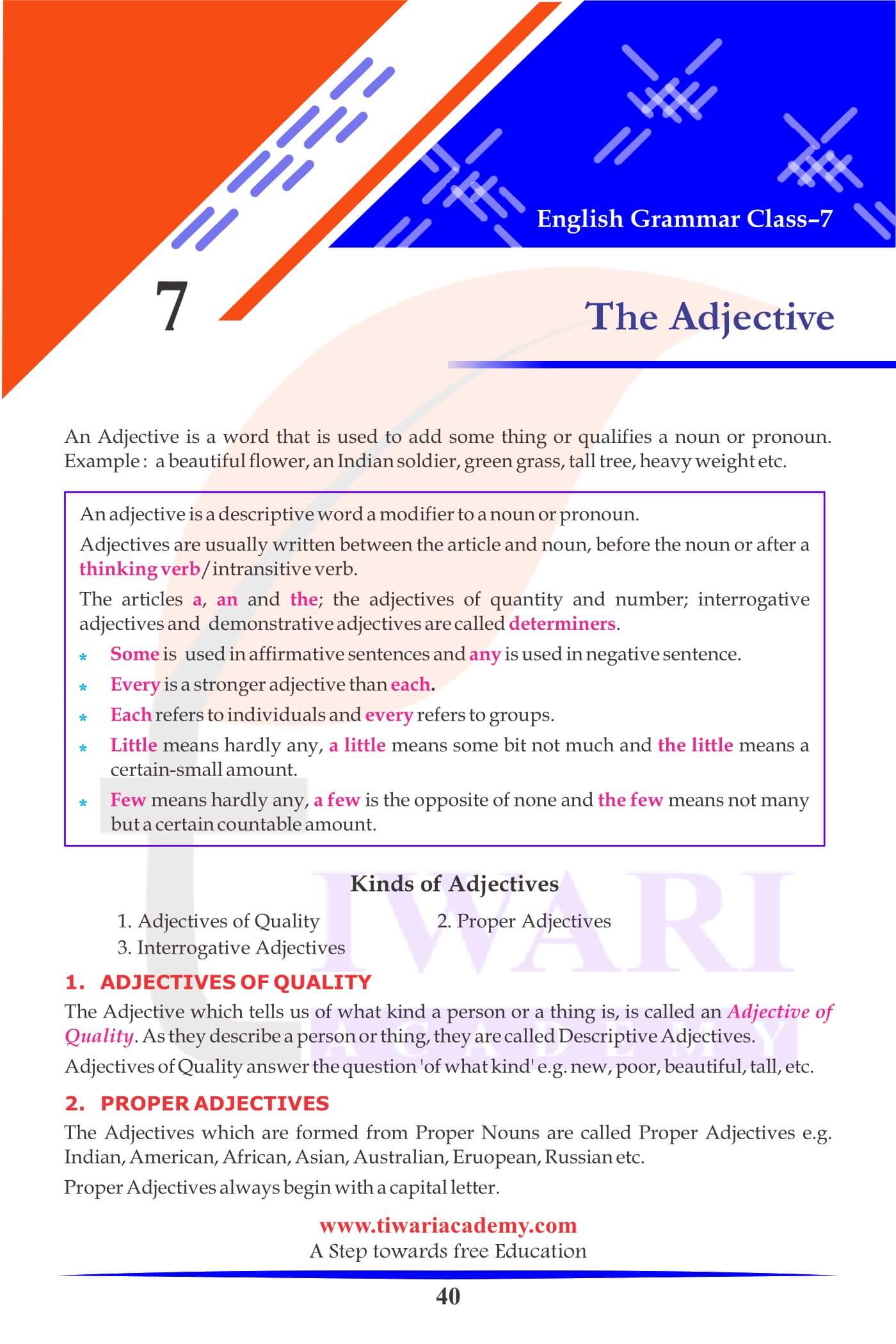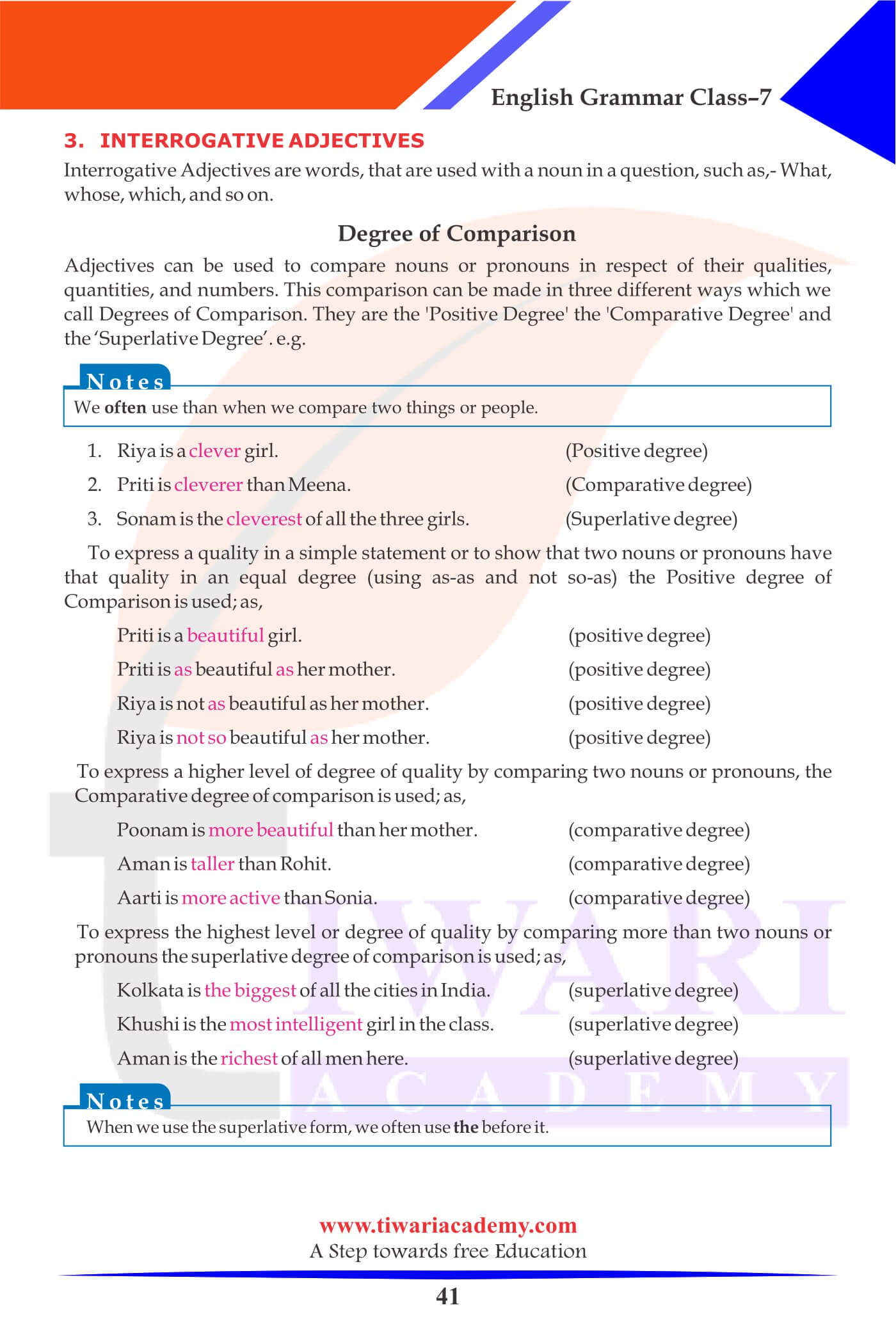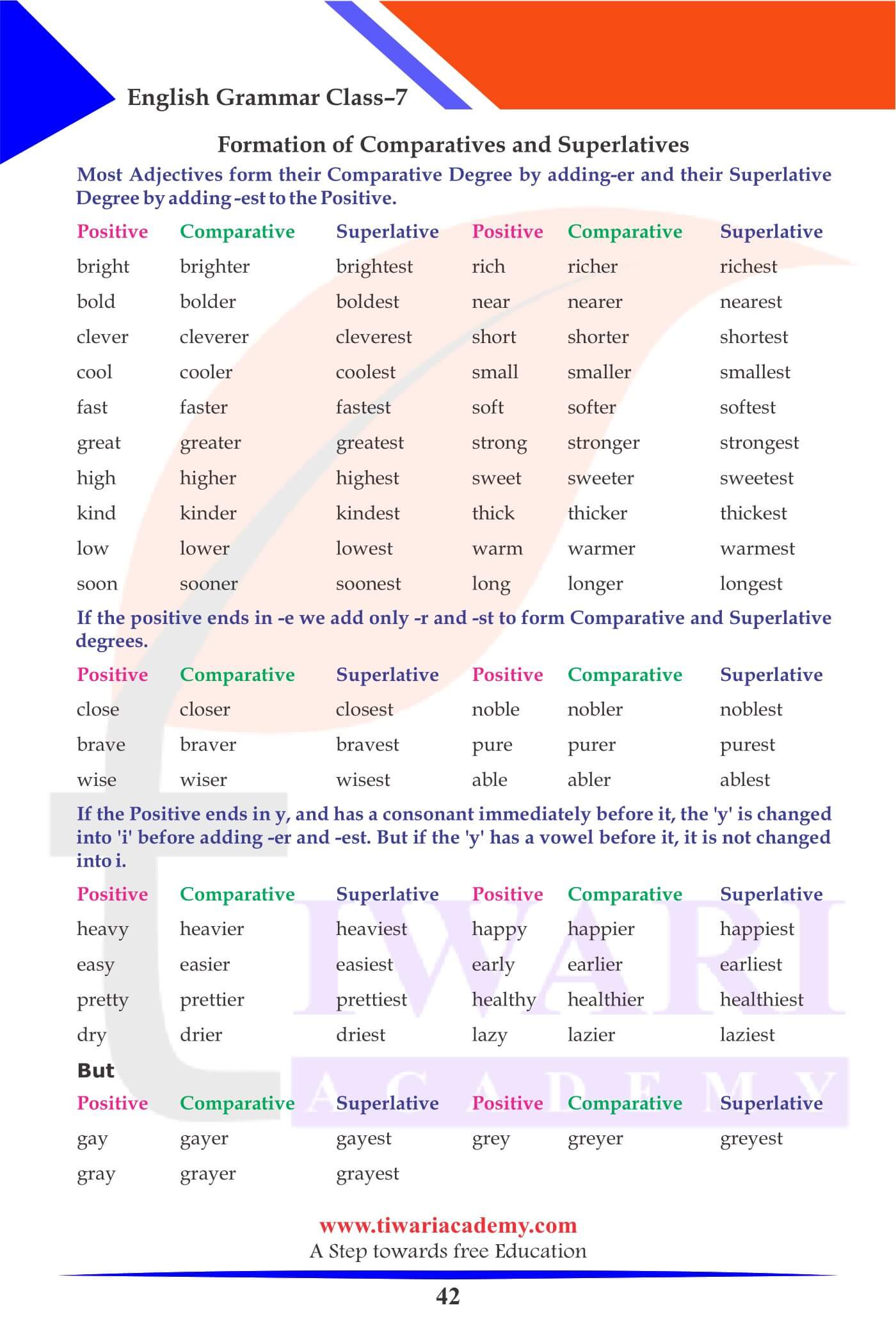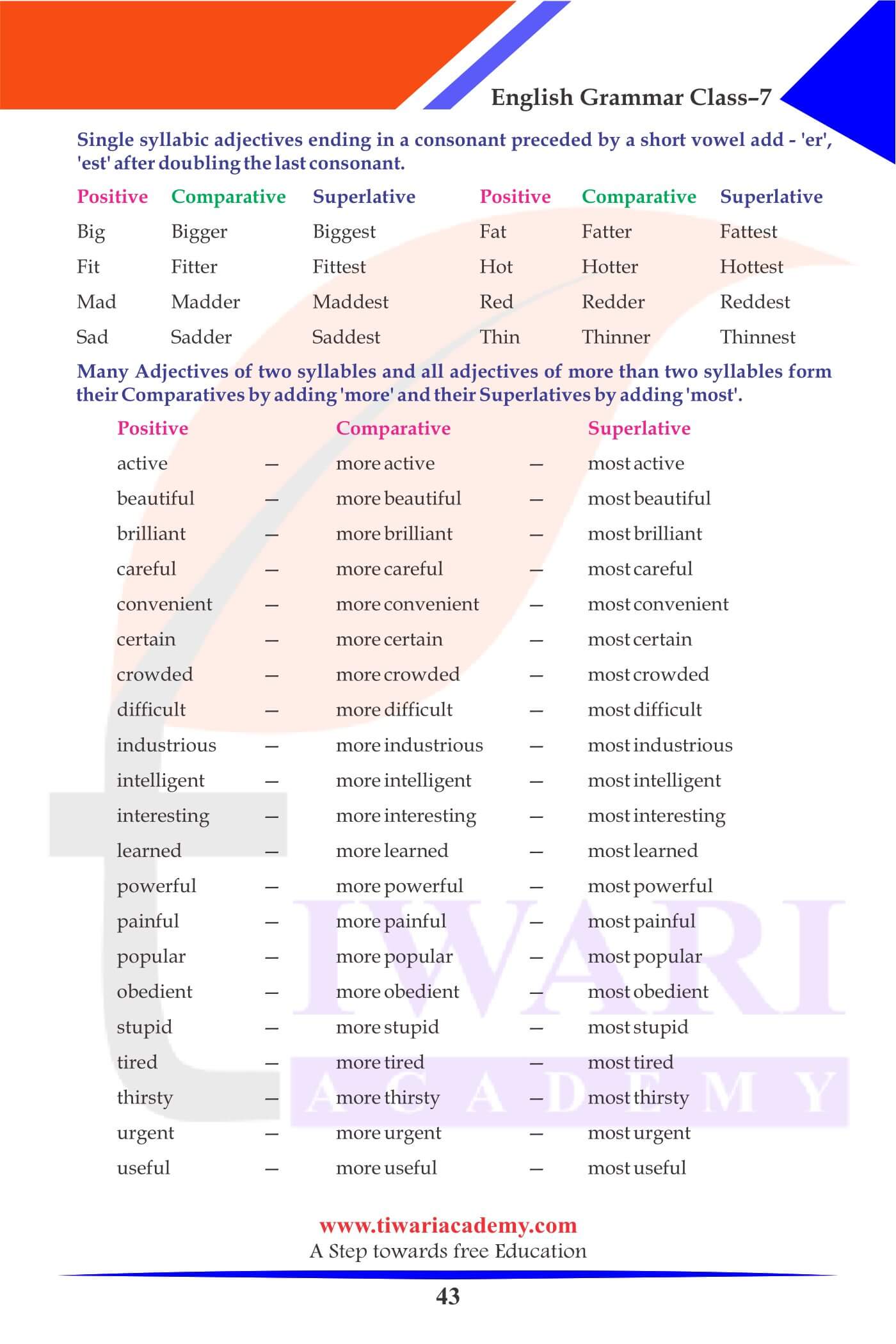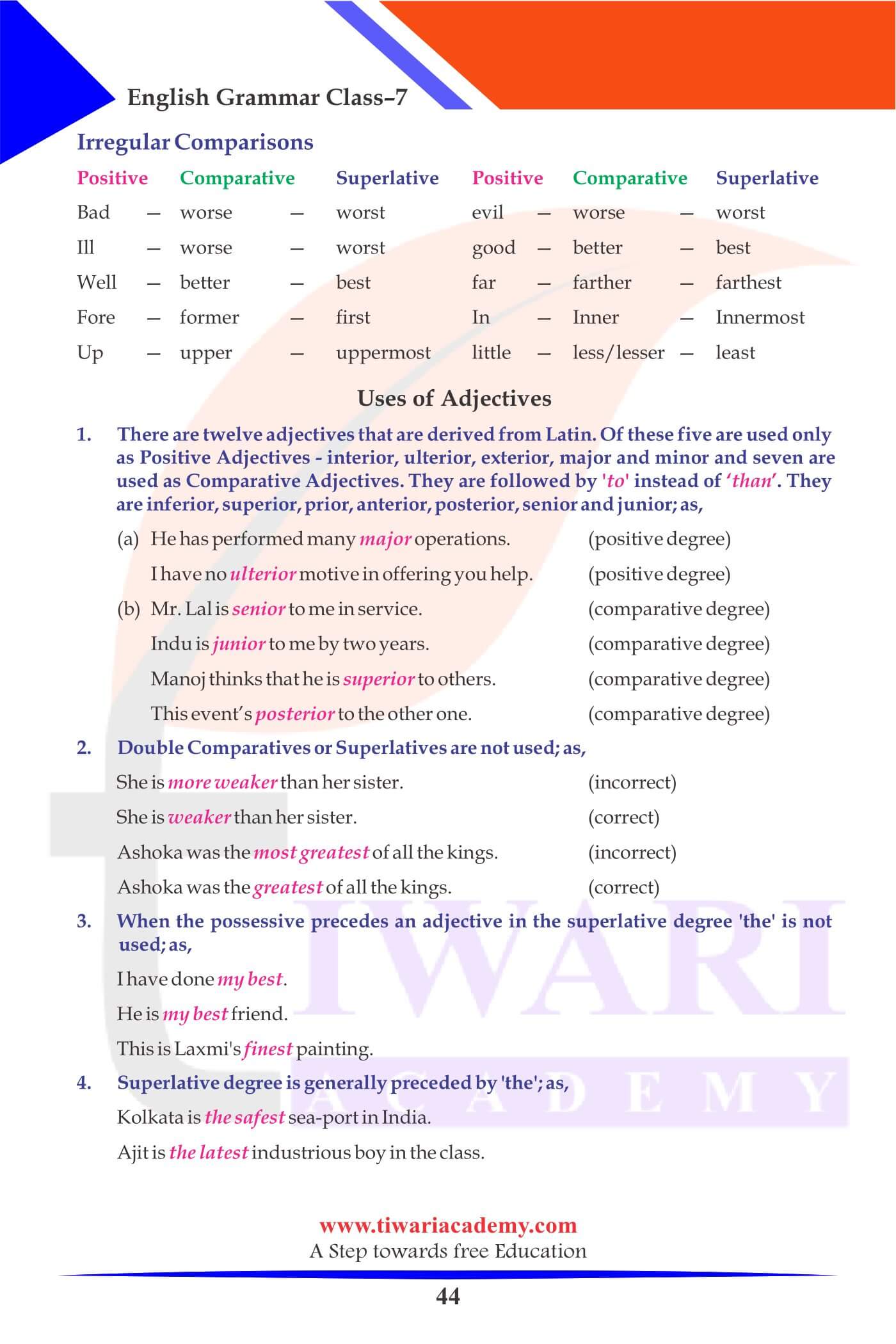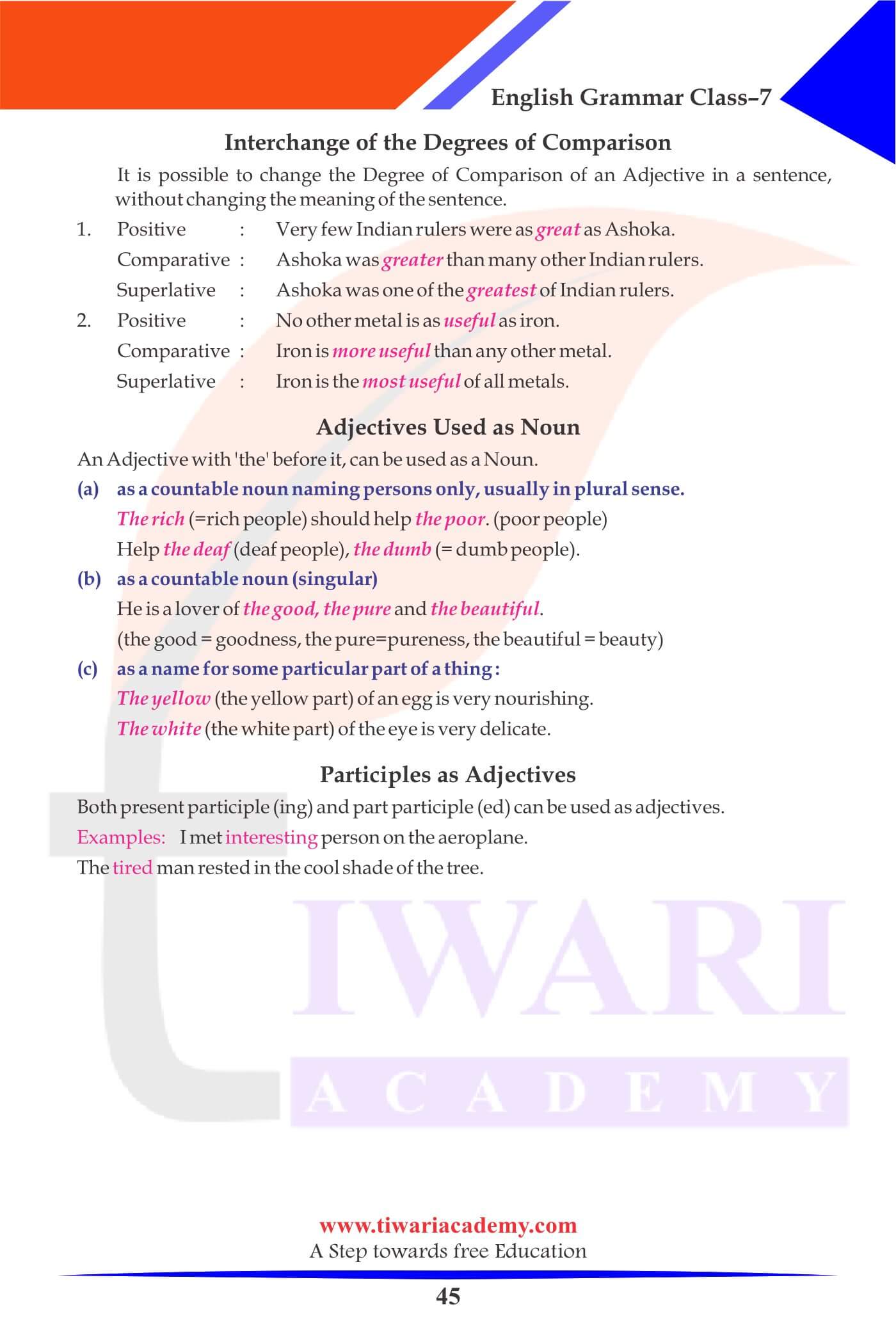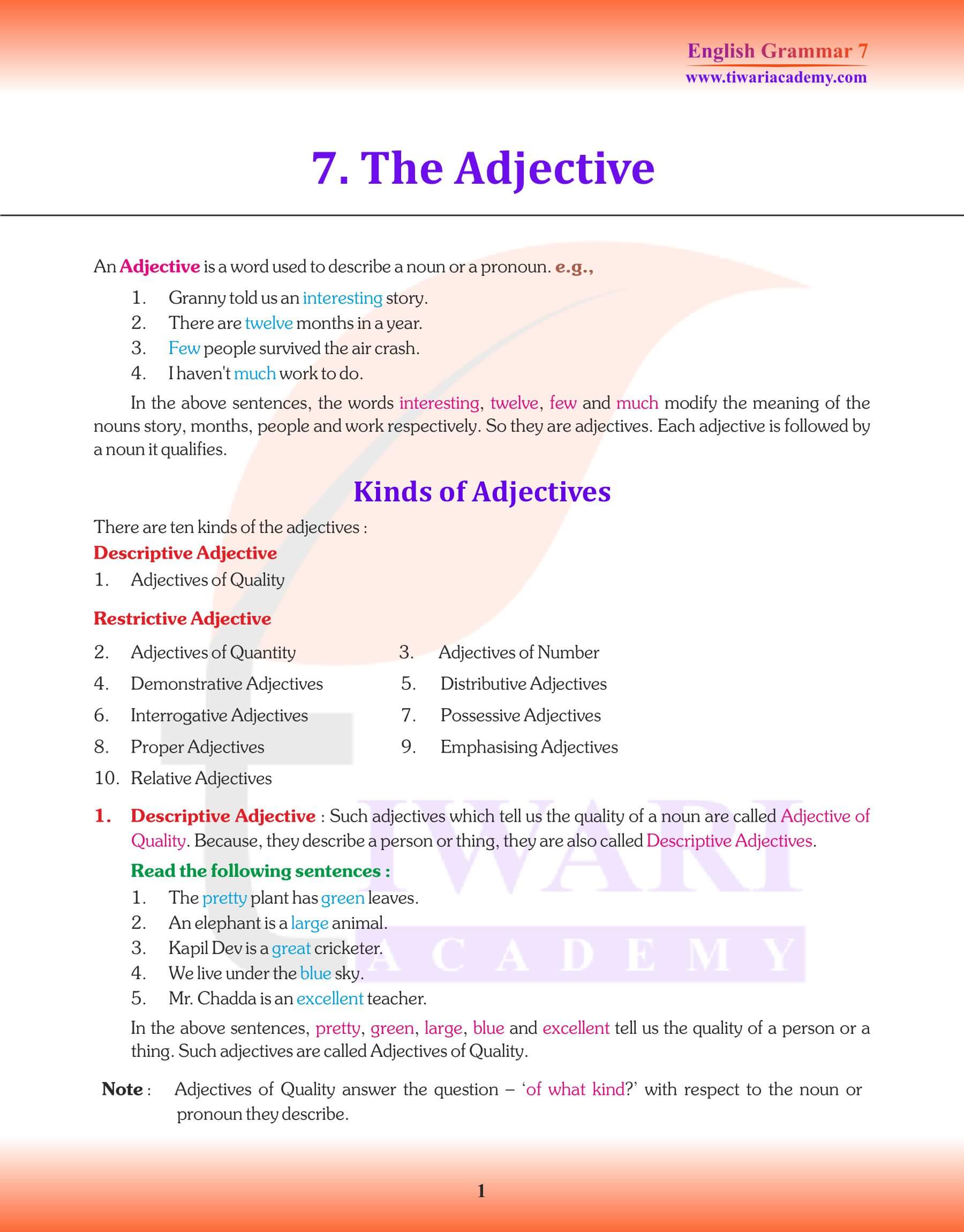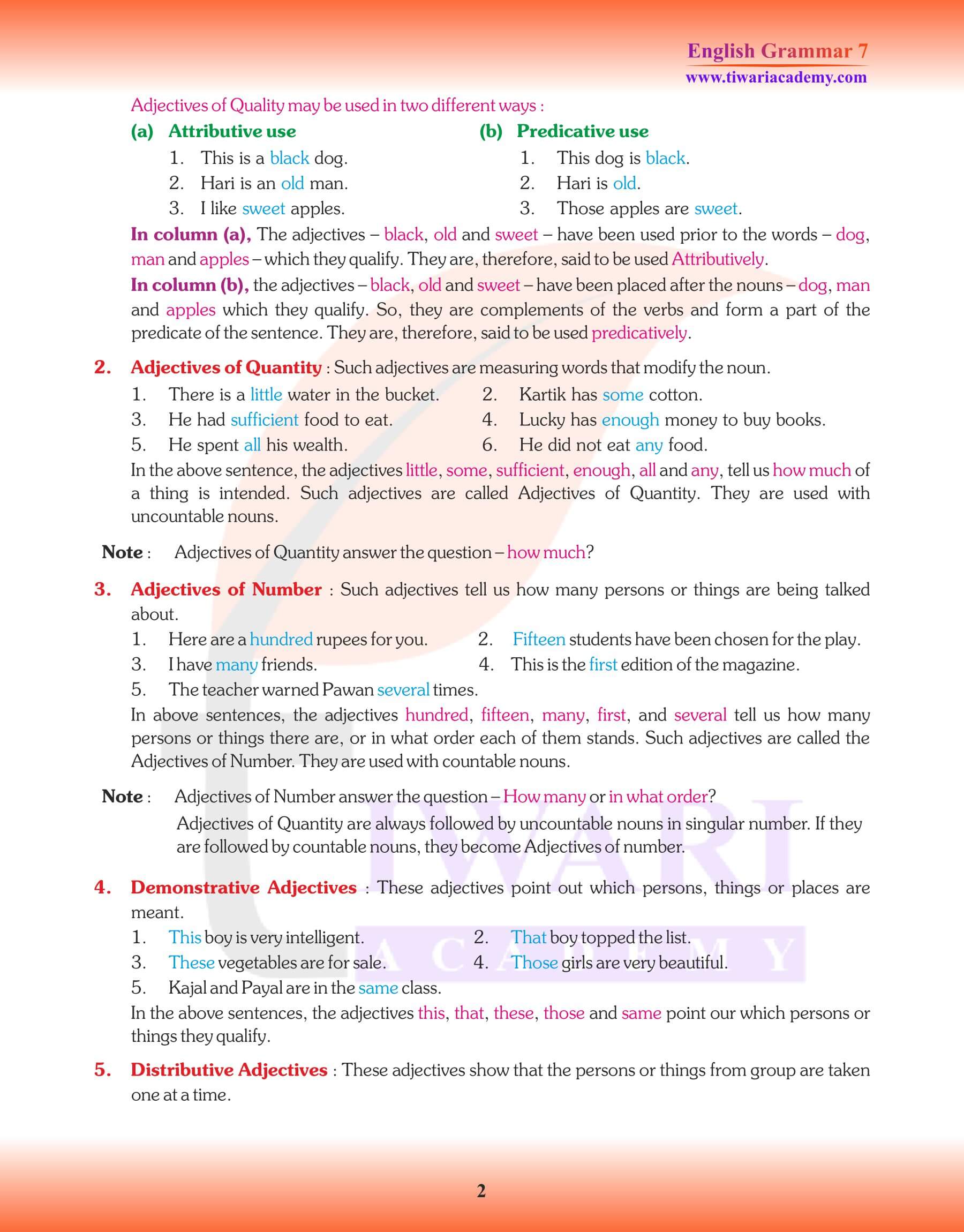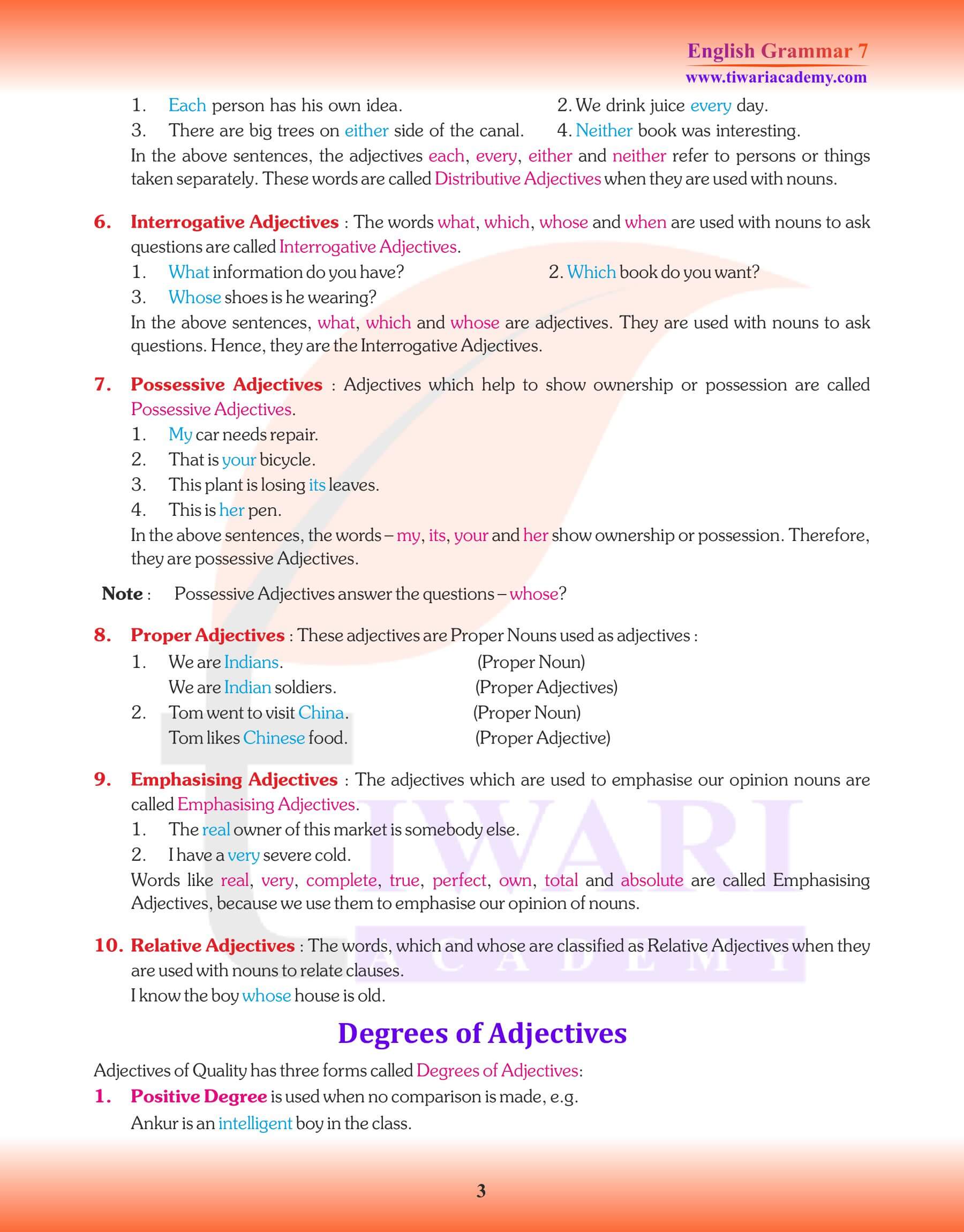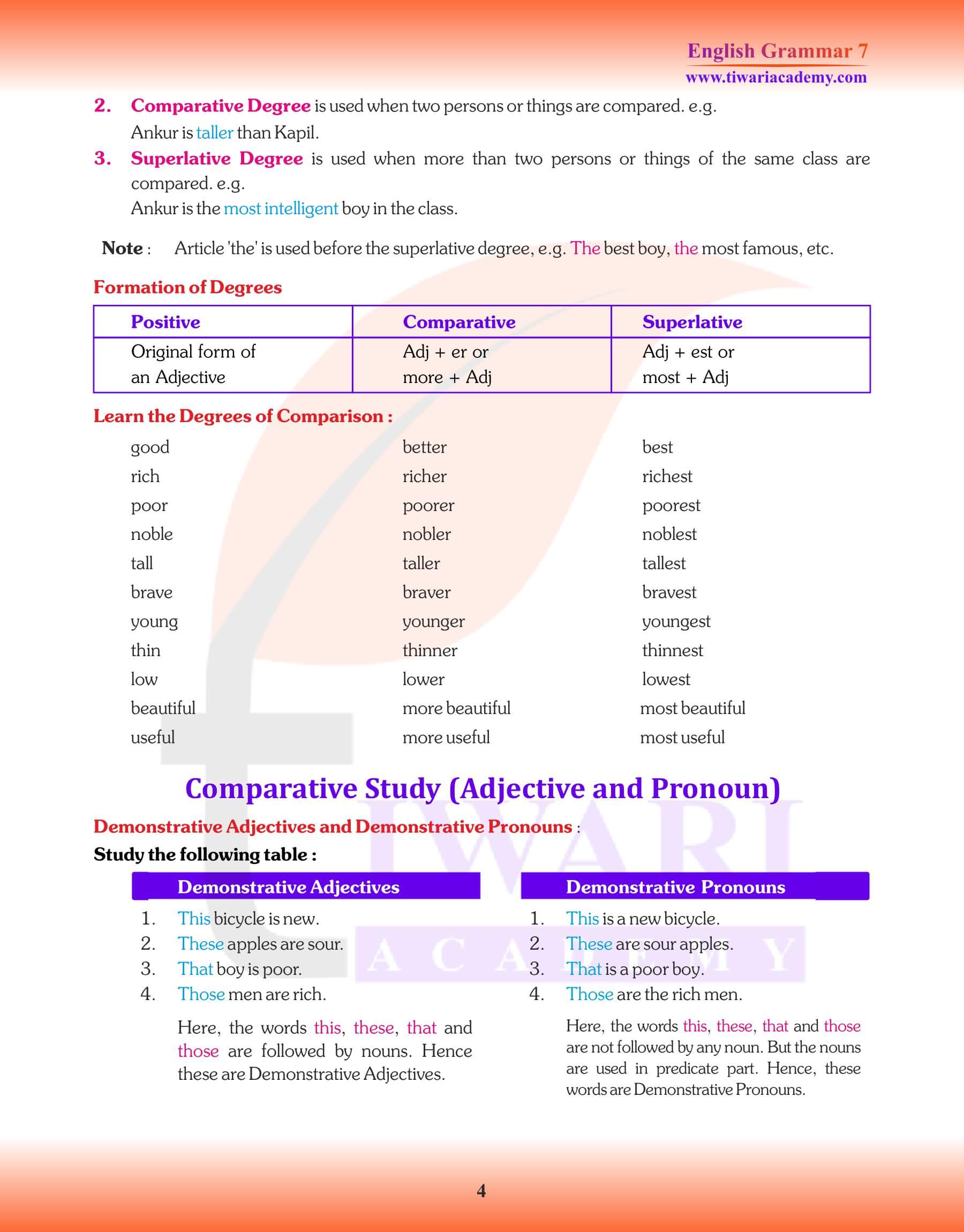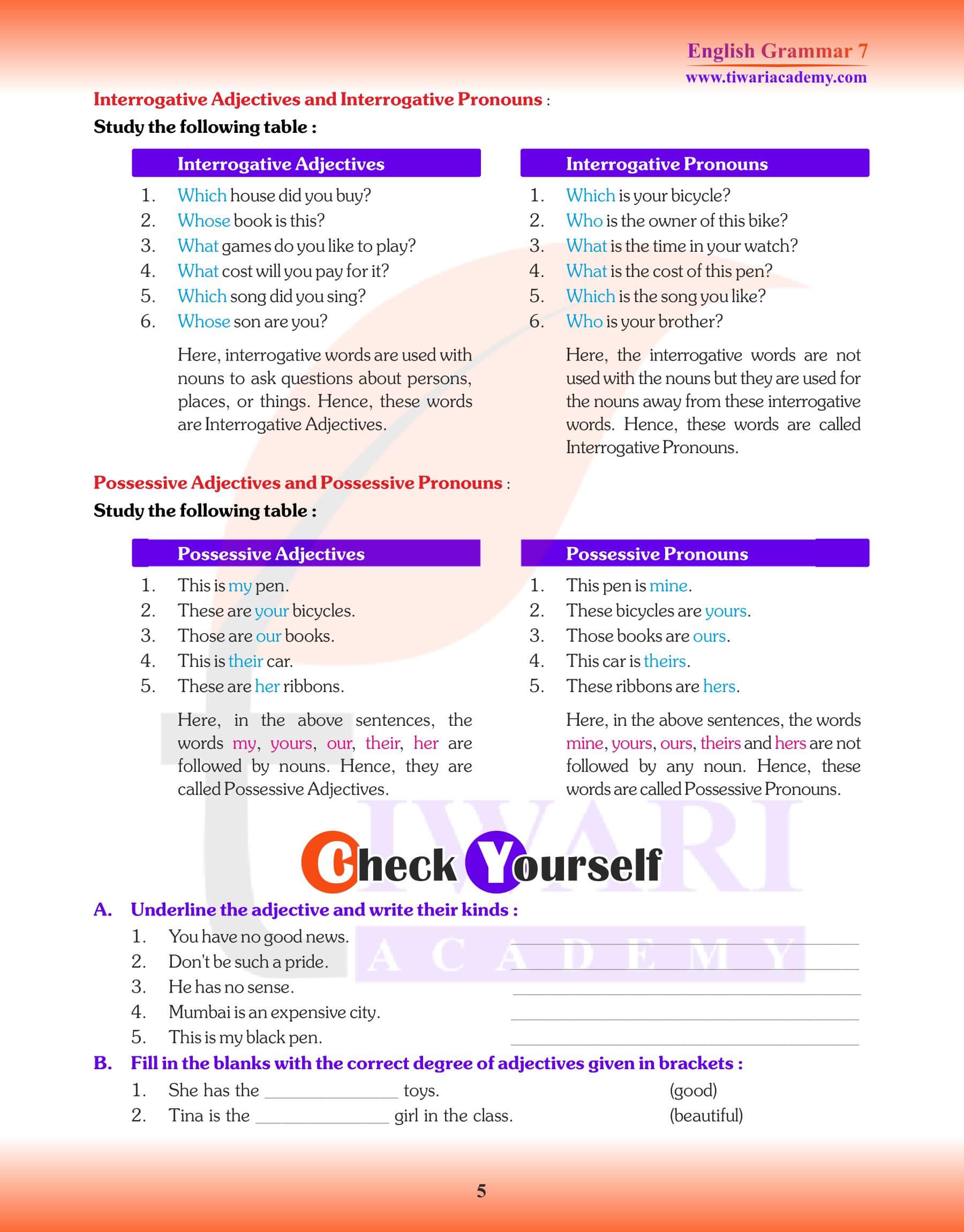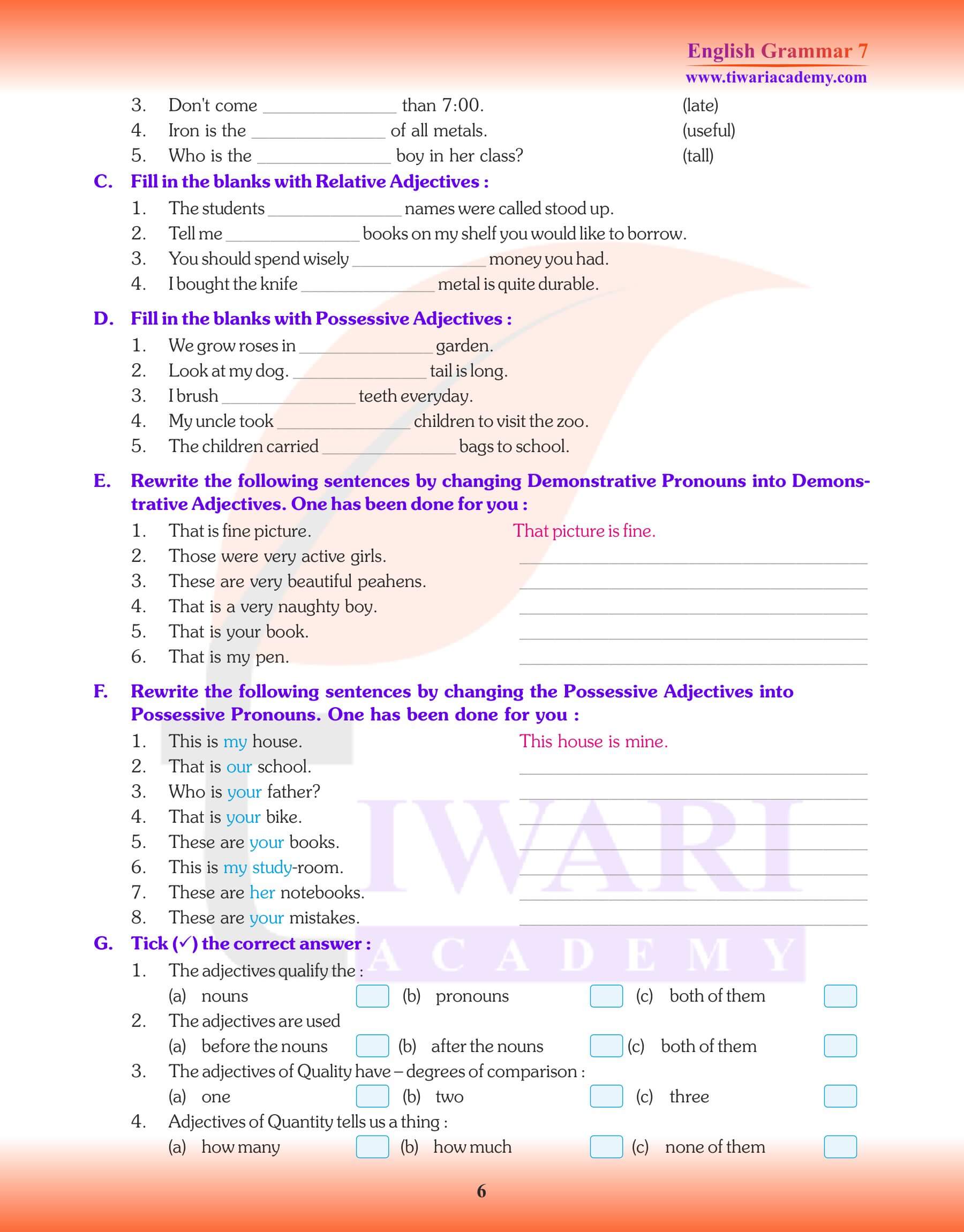Class 7 English Grammar Chapter 7 The Adjective. An Adjective is a word that is used to add some thing or qualifies a noun or pronoun. For example, a beautiful flower, an Indian soldier, green grass, tall tree, heavy weight etc. An adjective is a descriptive word a modifier to a noun or pronoun. Adjectives are usually written between the article and noun, before the noun or after a thinking verb/intransitive verb.
Class 7 English Grammar Chapter 7 The Adjective with Examples
In Chapter 7 of Class 7 English Grammar, students are introduced to the world of ‘Adjectives’. Essentially, an adjective serves as a descriptive tool that adds detail, depth, or clarification to a noun or pronoun. It paints a clearer picture for the reader or listener, enabling them to visualize concepts like the allure of a “beautiful flower” or the stature of a “tall tree”. Adjectives, in essence, modify or qualify nouns and pronouns, giving them more specificity and context.
| Class: 7 | English Grammar |
| Chapter: 7 | The Adjective |
| Content: | Textbook and Practice Book |
| Academic Session: | 2024-25 |
Kinds of Adjectives
1. Adjectives of Quality
2. Proper Adjectives
3. Interrogative Adjectives
ADJECTIVES OF QUALITY
The Adjective which tells us of what kind a person or a thing is, is called an Adjectives of Quality
As they describe a person or thing, they are called Descriptive Adjectives. Adjectives of Quality answer the question ‘of what kind’ e.g. new, poor, beautiful, tall, etc.
PROPER ADJECTIVES
The Adjectives which are formed from Proper Nouns are called Proper Adjectives e.g.
Indian, American, African, Asian, Australian, European, Russian etc. Proper Adjectives always begin with a capital letter.
INTERROGATIVE ADJECTIVES
Interrogative Adjectives are words, that are used with a noun in a question, such as, – What, whose, which, and so on.
The placement of adjectives is also a vital element of sentence construction. Typically, they are positioned between the article and the noun or directly before the noun. Moreover, they can be used after thinking verbs or intransitive verbs, adding further dynamism to sentence structures. Through this chapter, learners are equipped to enhance their descriptive capabilities, making their language more vivid and compelling.
Degree of Comparison
Adjectives can be used to compare nouns or pronouns in respect of their qualities, quantities, and numbers. This comparison can be made in three different ways which we call Degrees of Comparison. They are the “Positive Degree” the “Comparative Degree” and the “Superlative Degree”.
Note: We often use than when we compare two things or people.
1. Riya is a clever girl. (Positive degree)
2. Priti is cleverer than Meena. (Comparative degree)
3. Sonam is the cleverest of all the three girls. (Superlative degree)
Formation of Comparatives and Superlatives:
Most Adjectives form their Comparative Degree by adding-er and their Superlative Degree by adding -est to the Positive.
| Positive | Comparative | Superlative |
|---|---|---|
| bright | brighter | brightest |
| bold | bolder | boldest |
| near | nearer | nearest |
If the positive ends in -e we add only -r and -st to form Comparative and Superlative degrees.
| Positive | Comparative | Superlative |
|---|---|---|
| close | closer | closest |
| brave | braver | bravest |
| wise | wiser | wisest |
If the Positive ends in y, and has a consonant immediately before it, the “y” is changed
into “I” before adding -er and -est. But if the “y” has a vowel before it, it is not changed into i.
| Positive | Comparative | Superlative |
|---|---|---|
| heavy | heavier | heaviest |
| happy | happier | happiest |
| easy | easier | easiest |
Single syllabic adjectives ending in a consonant preceded by a short vowel add – “er”,
“est” after doubling the last consonant.
| Positive | Comparative | Superlative |
|---|---|---|
| Big | Bigger | Biggest |
| Fat | Fatter | Fattest |
| Fit | Fitter | Fittest |
Many Adjectives of two syllables and all adjectives of more than two syllables form their Comparatives by adding “more” and their Superlatives by adding “most”.
| Positive | Comparative | Superlative |
|---|---|---|
| active | more active | most active |
| beautiful | more beautiful | most beautiful |
| brilliant | more brilliant | most brilliant |
Irregular Comparisons:
| Positive | Comparative | Superlative |
|---|---|---|
| Bad | worse | worst |
| evil | worse | worst |
| Well | better | best |
Uses of Adjectives
There are twelve adjectives that are derived from Latin. Of these five are used only as Positive Adjectives – interior, ulterior, exterior, major and minor and seven are used as Comparative Adjectives. They are followed by “to” instead of “than”. They are inferior, superior, prior, anterior, posterior, senior and junior as,
(a) He has performed many major operations. (positive degree)
(b) Mr. Lal is senior to me in service. (comparative degree)
3. When the possessive precedes an adjective in the superlative degree “the” is not used as, I have done my best.
4. Superlative degree is generally preceded by “the” as, Kolkata is the safest sea-port in India.
